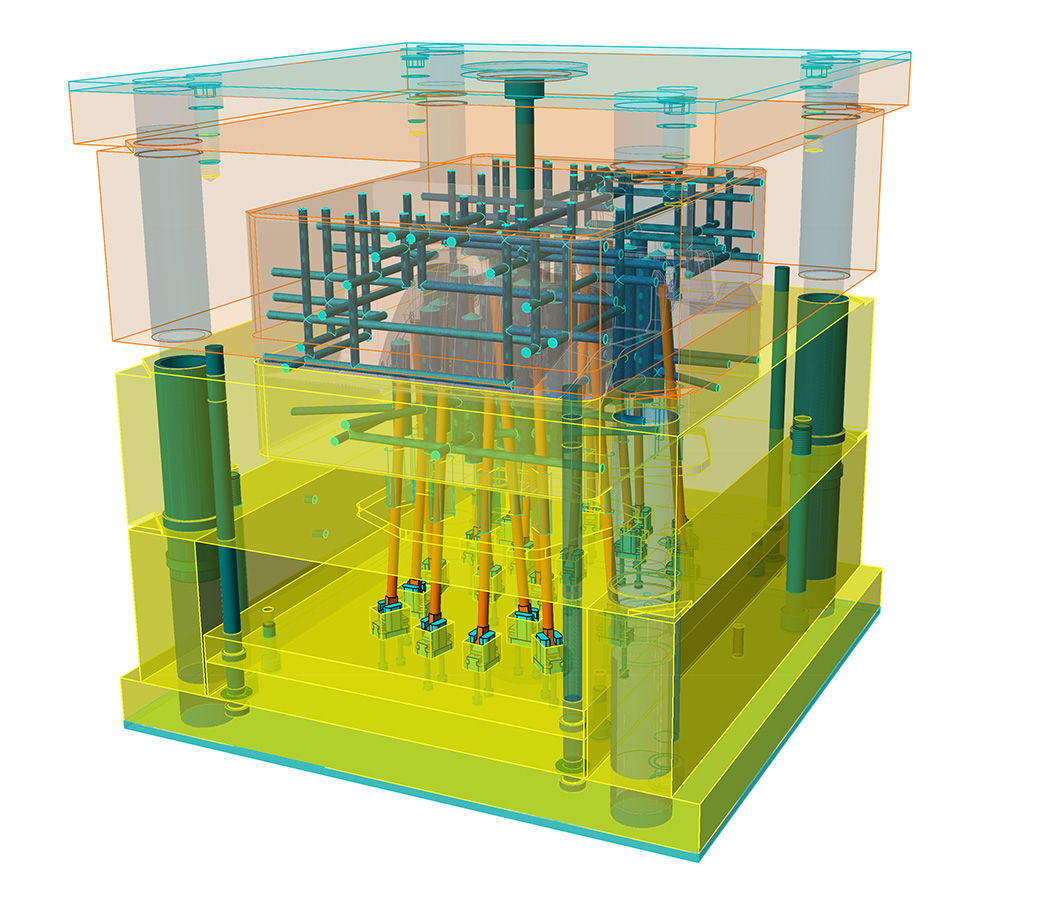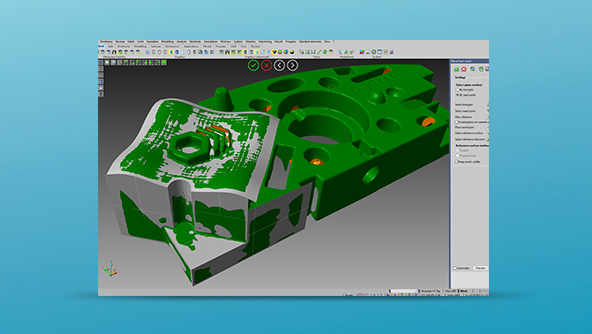Pre-production analysis
Before any tool design is started, preventive analysis can detect potential manufacturing issues - such as welding lines, air traps and best gate location etc, providing the maximum possible time frame for a corrective solution.
Post-production analysis
When a component is already in production and not performing as expected, moulding simulations can help the operator better understand the conditions inside the mould cavity during the moulding cycle. This procedure can help judge the effectiveness of different corrective actions and produce the most effective improvements to the moulding results.
Concurrent engineering
Pre-production and post-production analyses can certainly be very helpful but, if not related to the entire process, they do not guarantee the complete optimisation of the part/mould/moulding process. This is only made possible only through an integrated CAD/CAM/CAE analysis. An uninterrupted data exchange between the design and the analysis environment provides the ability to identify possible critical situations, set the most effective moulding parameters, optimise the runners and cooling layout and predict problems concerning any part of the plastic component creation process.
Runner and cooling systems
A range of methods are available for importing or creating one of the most important mould tool features. Any feeding and conditioning system, with no limit of complexity, can be included within the analysis, and easily edited to allow for a comparative analysis to be calculated.
Patented meshing technology
Using a proprietary hybrid meshing technology, VISI Flow performs a real 3-dimensional flow simulation with very short calculation times. The solid mesh creation is an automated function applied to any CAD geometry providing VISI Flow with short model preparation times and rapid analysis calculations. The patented meshing approach gives consistent results unaffected by component sise, complexity or wall thickness.
Materials database
The accuracy of the analysis result is directly related to the material characterisation. VISI Flow includes an extensive material database covering a wide selection of material grades and suppliers. New materials are constantly being developed and introduced into the market place, so to guarantee an accurate representation of moulding materials, VISI Flow provides the operator with the ability to easily add new polymer grades or modify the existing data to match the exact moulding material being used.
Filling phase
The filling phase provides the same level of control over the injection of molten polymer into the mould cavity as you have on any injection moulding machine. The filling simulation provides the ability to forecast and visualise how a component will be filled by the plastic melt front; making it possible to identify any potential aesthetic issues. The filling module provides many tools to allow the operator to investigate the moulding variables; such as pressure, temperature, shear stress, frozen skin, fibre orientation, clamping force and many others.
Shape phase
The result presented by VISI Flow Shape allows the operator to visualise and measure the final moulded shape predicted after processing the values for the filling, holding and freezing moulding phases. Many tools are provided to the operator for evaluating the result; including viewing displacement along an axis, querying point locations to calculate the warpage, linear shrinkage and ensuring feature ovalisation stays within any set tolerance. The results will also help identify any possible defects, such as sinking or voids caused by packing conditions during the holding time. If necessary, it is possible to export the warped model geometry for comparison with the original CAD data for potential reverse engineering or improvements to the mould tool design.
Thermal phase module
The thermal module is a powerful tool for the detailed analysis of the effect of the thermal conditioning system of an injection mould tool. The thermal module provides the ability to run an analysis by considering all possible thermal effects due to the heat exchange among plastic and blocks, hot and cold runners and mould inserts with highly conductive materials. The ability to analyze the cooling system allows the operator to visualise the warpage related to the cooling system and makes it possible to define the best layout to achieve the shortest possible cycle times. Other useful features include controlling both core and cavity temperatures, analyzing the temperature distribution through the insert blocks and defining the ejection time in relation to the solid fraction of the part.
Analysis of the moulding process
Other optional modules make it possible to simulate the latest moulding techniques such as sequential moulding, gas-assisted, co-injection, overmoulding technologies and crosslinking grades. As with all modules within VISI Flow, the system automatically enters key values for creating an analysis relevant to the geometry and material grade selected.








